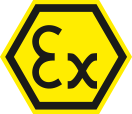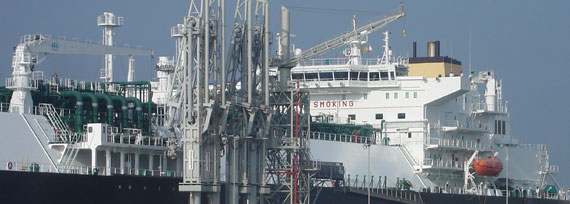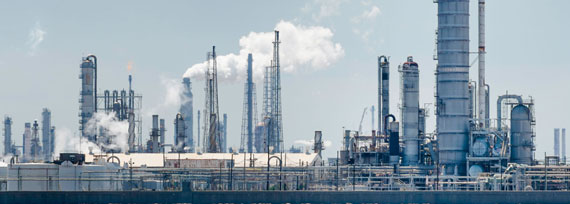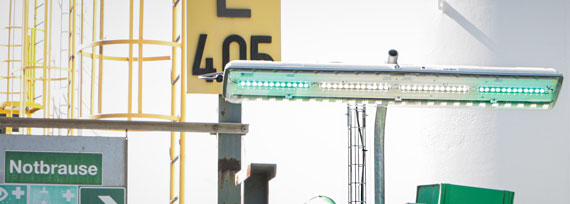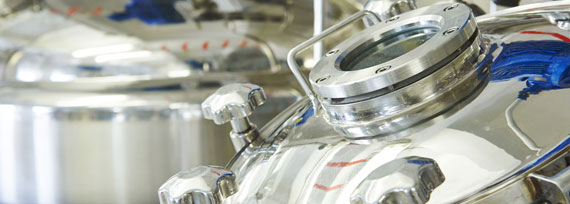Mobile Ex p control cabinet for Raman spectroscopy
At R. STAHL, the team is very used to manufacturing customer-specific cabinets. No two cabinets are ever quite the same. Even with that in mind, one project at a large active agent manufacturer was still something special. Alongside explosion protection, the specific pharmaceutical aspects of this project posed unique challenges.
The challenge
Without a keen eye for detail, it would not have been possible to implement this project, which was executed for a major active agent manufacturer. This starts immediately with the system to be protected. Within a granulate production system, in which large quantities of solvents are required, the process of Raman spectroscopy is used for online process control. Raman analysis equipment provides extremely accurate information about the chemical composition of substances in a process. To do so, lasers with specific wavelengths interact with molecules, causing an identifiable scatter pattern. In a way, each element has a unique identifiable fingerprint; this process can also quantify volumes. The interesting thing about this process is that the values are available in real time, which enables online process control.
The next element of the project was to ensure that the Raman analyser could be safely packed away from an explosion protection perspective. After all, this device is among the most costly analysis equipment. This gave rise to an additional challenge – the analyser must remain movable, since it is used for multiple processes during production.
Two options were available. The device could be set up in the non-Ex area with explosion-protected probes extending into the hazardous area. Alternatively, the device itself could also be permanently located in the hazardous area of the production facility; however, in this case, the device would require corresponding explosion protection. A downside of the first option was that the probes – in this case, highly sensitive fibre optic cables – would need to cover a distance of up to 40 metres. The second option would involve safely integrating the device in an Ex p protected cabinet.
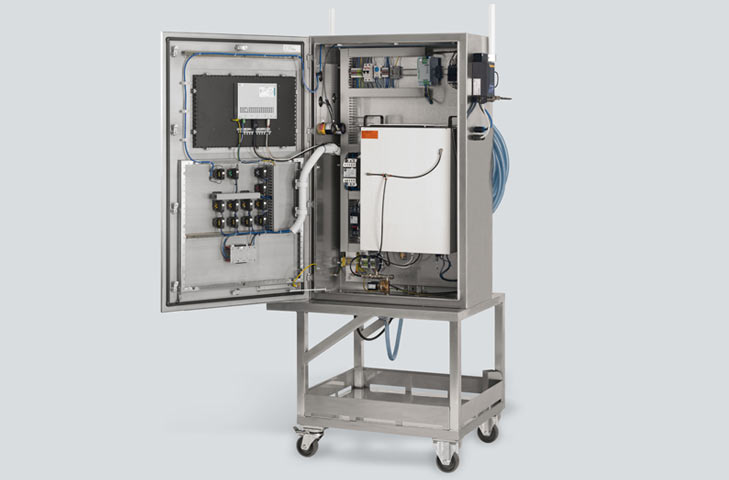
Pressurised enclosures on the rise
More and more users are making the change to protecting their devices using the pressurised enclosure degree of protection. The greatest advantage of this concept is that it is safe, robust and simple. Once the device has been safely stored inside – that is, installed according to explosion protection specifications – the user can close the doors and relax, confident in their knowledge that everything is safe. In addition, this degree of protection offers a range of advantages when it comes to practical handling. So tailor-made special enclosures, but as well as smaller and larger Ex e or standard enclosures can be used. A typical Ex d enclosure weighs 180 kilograms; in contrast, a corresponding Ex p enclosure weighs just 40 kilograms.
R. STAHL offers control and monitoring systems that are protected by the pressurised enclosure type of protection in several versions. These feature a standardised design and always consist of an Ex p control unit, Ex p pressure monitors (air outlet) and Ex p purge valves with digital or proportional control. Depending on the phase a certain quantity of ignition protection gas (compressed air or inert gas) will be brought into the Ex p enclosure and will be regulated to a specific overpressure. Additionally, a temperature monitoring and control system is integrated inside the enclosure to provide adequate cooling.
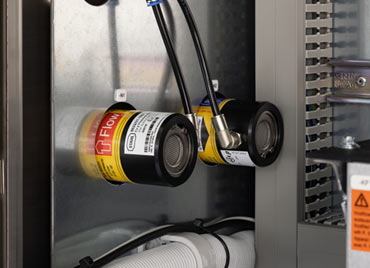
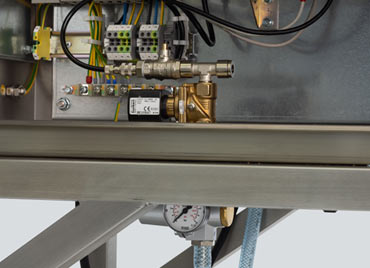
Always in the right place
Before the project could get under way, a few detailed questions needed to be clarified. The first topic of discussion was mobility. The active agent manufacturer required a portable version that would enable the device to be used on a variety of systems. This required a moving base frame for the cabinet, on which a number of elements, including the rollers, had to be electrically conductive.
This solution was extremely advantageous, as it meant that the analyser could be positioned right next to the system, meaning that the probes could be shortened to just ten metres. Mechanical protection for the probes in their rolled-up state was installed in order to ensure that the extremely delicate probes would not be damaged when moving the device to a different system. When the probes are not in use, they are raised and safely tucked away there. The same is true for the compressed air and electrical supply lines, which are safely stowed on the rear of the device when not in use.
The perfect solution, even when things get tricky
Normally, Ex e cable glands can be used to route the wires from inside to outside. However, when it came to this step of the project, another unique challenge became clear. The wider end of the probes could not simply be routed through the cabinet using a cable gland. As a result, a specialised, flexible, adaptable cable sealing system was chosen. This multi-cable transit (MCT) connection with IP 66 protection is made up of a folding cable bushing that prevents potentially explosive gases from passing through. The enclosure itself meets all Ex e requirements across the board, including IP protection and impact resistance. However, GMP directives also had to be followed, specifying a surface roughness of less than 0.8 µm and, instead of IP 65 protection at the air outlets, one protection class higher was used. So an IP66 protection cover was also fitted over the outlets.
To save on communications cables, an additional two antennae were integrated in the cabinet to provide a WiFi connection. This enables the analysis data to be transferred directly to the control system. Furthermore, an HMI with safety glass in the door of the cabinet offers an overview of current measuring data – this means that the process can be monitored closely on the spot, as well.
The Raman analyser was rotated inside the cabinet to ensure that all components – not just those required for explosion protection – were safely housed inside the cabinet.
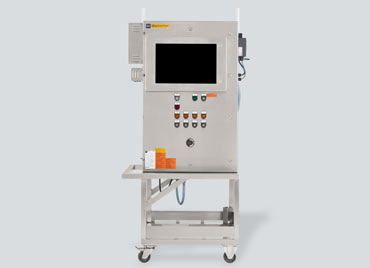
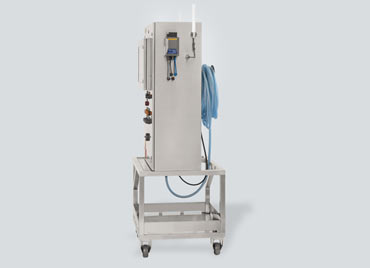
Keeping a cool head
In general, when using the pressurised enclosure degree of protection, it must be ensured that the components installed inside the enclosure will not overheat. Since many of these systems are used in extremely warm climates, air conditioning is required for around three-quarters of Ex p applications. Even in Germany, the warm summer months can be a problem for the Raman analyser, in particular, because it shuts down when the temperature in the cabinet reaches 35 °C. In spite of this, for this project, the decision was made to avoid an additional cooling system; instead, a temperature control device inside the cabinet monitors the temperature. If the temperature rises, the purge valve opens briefly to allow cold air to enter. If this is insufficient, the cabinet already contains the fixtures required for additional vortex cooling. The project leaders would rather avoid the use of a vortex cooling system, since these systems always generate a certain amount of noise and are more expensive to operate. Instead of the current pressure of 2 bar, a pressure of 5 bar would be required.
Prospects
Although the team at R. STAHL are already masters in implementing unusual requests when using the pressurised enclosure degree of protection, this tailor-made cabinet for the delicate Raman analyser was still a novelty. As well as explosion protection specifications and the specialised requirements for pharmaceutical production facilities, the complex supply chain involving multiple European partners was the source of new challenges at every stage for the project managers. The end of the project brought one last pleasant surprise – the staff in the pharmaceutical company's tablet production facility were so amazed by the portable explosion-protected cabinet that they ordered one for their own Raman analyser as well.
Three steps to ensure protection
Typical Ex p pressurised enclosures are operated in three separate steps:
Preparation phase: Compressed air or inert gases are transported into the Ex p enclosure via the purge valve and an overpressure is generated. Once this is achieved, the "pre-purging" phase begins; this is regulated via the Ex p control unit.
Pre-purging phase: Before starting up the equipment located inside the cabinet, any explosive mixture that may be present must be blown out of the enclosure. The purge valve opens once the preset internal enclosure pressure has been reached. Next, thorough purging is performed using ignition protection gas. These air outlet valves (pressure monitors) are positioned in different locations in order to guarantee controlled flow behaviour. The extremely short purge times at very low pressure loads (up to 15 mbar) are particularly advantageous. This enables the wall thickness of the cabinet walls to be reduced to 2 mm, as a rule. This, in turn, lowers costs. Once the pre-purging phase is complete, the purge valve closes and the purge flow stops. The internal enclosure pressure returns to the preset value and the air outlet valve closes.
Operating phase: Normal operation begins and the control unit monitors and regulates the internal enclosure pressure in order to prevent explosive gases or dusts from entering the enclosure. The purge valve automatically compensates for any leakage losses.

